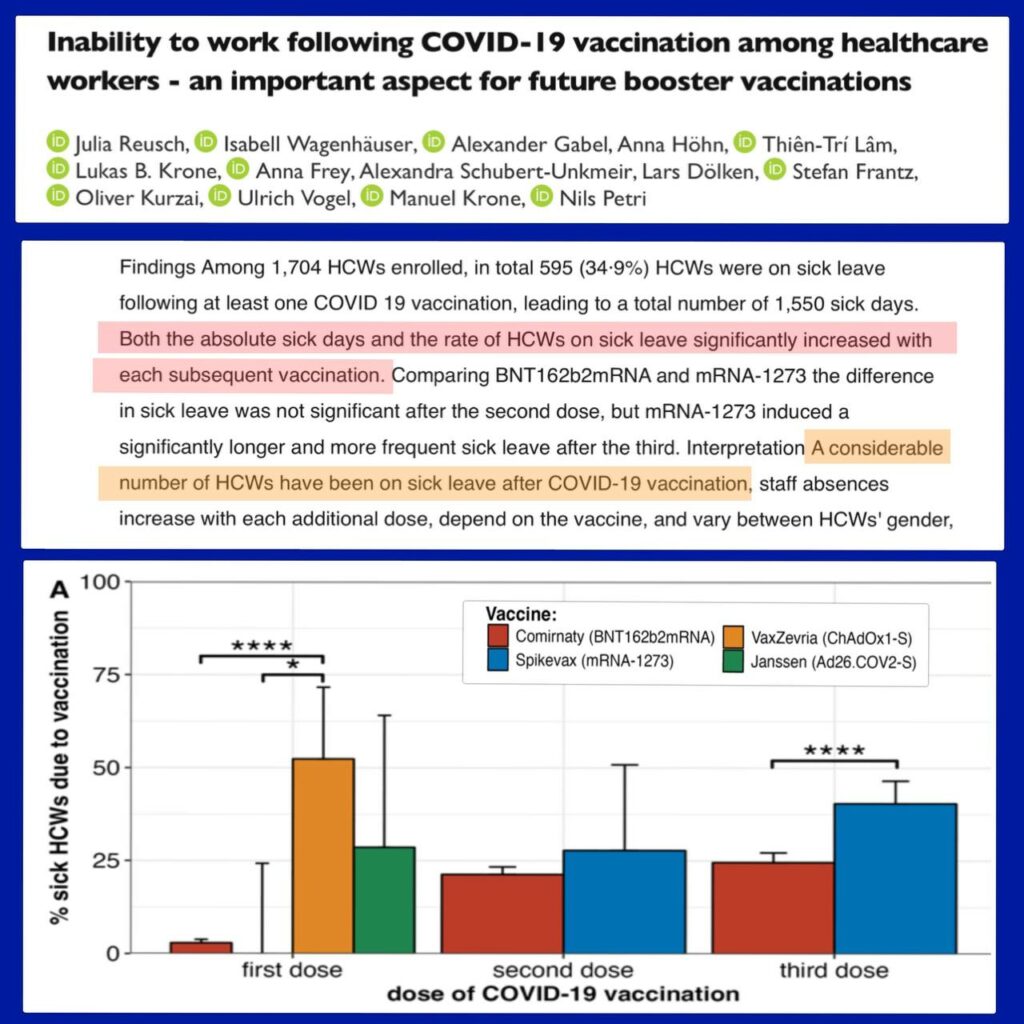
Abstract
Background COVID-19 vaccination is a key prevention strategy to reduce the spread and severity of SARS-CoV-2 infections, especially among highly exposed healthcare workers (HCWs). However, vaccine-related inability to work among HCWs could overstrain healthcare systems.
Methods This study examined sick leave and intake of pro re nata (PRN) medication after the first, second and third COVID-19 vaccination in HCWs. Subgroup analyses were performed for different vaccines, gender, healthcare professions, and for HCWs aged at least 30 years. Data was collected by using an electronic questionnaire.
Findings Among 1,704 HCWs enrolled, in total 595 (34·9%) HCWs were on sick leave following at least one COVID 19 vaccination, leading to a total number of 1,550 sick days.
Both the absolute sick days and the rate of HCWs on sick leave significantly increased with each subsequent vaccination.
Comparing BNT162b2mRNA and mRNA-1273 the difference in sick leave was not significant after the second dose, but mRNA-1273 induced a significantly longer and more frequent sick leave after the third.
Interpretation A considerable number of HCWs have been on sick leave after COVID-19 vaccination, staff absences increase with each additional dose, depend on the vaccine, and vary between HCWs’ gender, and profession.
In the light of further COVID-19 infection waves and booster vaccinations, there is a risk of additional staff shortages due to post-vaccination inability to work, which could acutely overload healthcare systems and jeopardise patient care. These findings will aid further vaccination campaigns to minimise the impact of staff absences on the healthcare system.
Source – https://www.medrxiv.org/content/10.1101/2022.11.21.22282594v1
